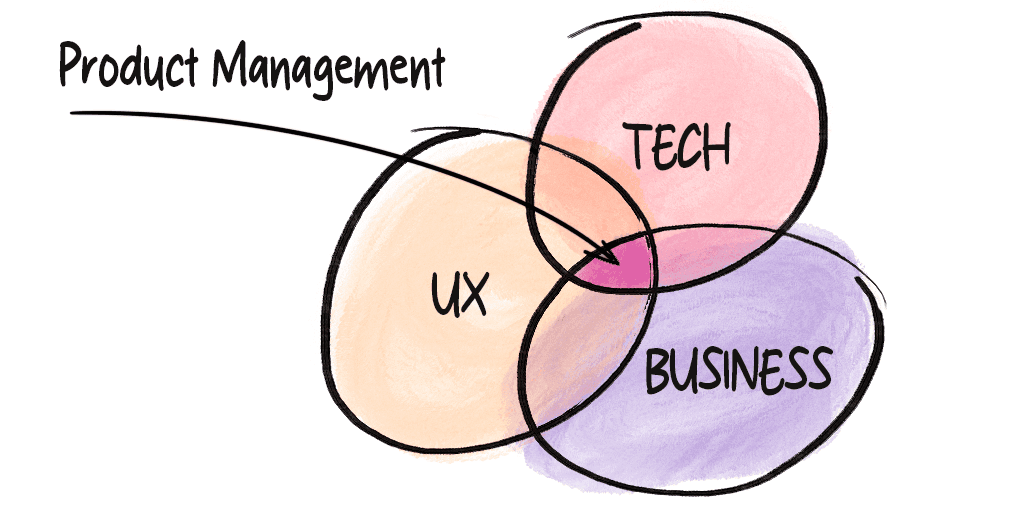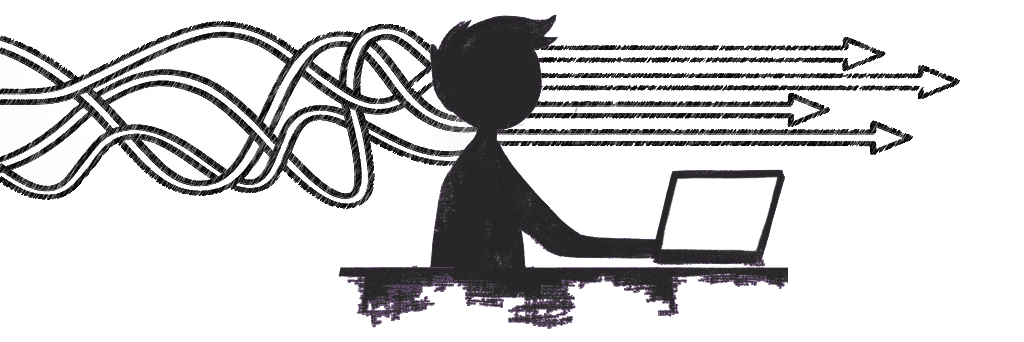There was a period in my consulting career when almost all of my client work involved rescuing derailed and failing projects. I was brought in to get them back on the track and successfully launched. The specific issues differed from client to client and across projects, but the underlying root cause often came down to a lack of experienced product leadership.
Imagine deciding to build your dream house without blueprints, an architect, or any planning. You just hire a bunch of contractors, buy materials as you go, and start construction. It's a recipe for disaster. But this is how many people—even seasoned business leaders—think they can go about building software.
Today, I'm less focused on rescue operations, and more on making sure projects don't derail in the first place. Part of that effort includes helping business leaders understand what goes into successfully building and launching digital products that succeed in the market, and why product leadership is so critical in making sure that happens.
So let's start at the beginning and take a look at what product management is, why it's important, and how it can—and likely should—fit into your business strategy.
What is Product Management?

Product management sits at the crossroads of business, technology, and user experience. It's a strategic role that guides every step of a product's journey—from discovery and planning, through design and development, to market positioning and pricing. The focus is on spotting opportunities, defining what success looks like, and aligning cross-functional teams to bring solutions to life.
Product managers have sometimes been called the CEO of the product. While the analogy isn't perfect, it does capture the wide range of responsibilities and the strategic nature of the role. Here are just a few of the key things product managers do:
- Define the product vision and long-term strategy
- Research and analyze the market landscape
- Identify user needs, goals, and pain points
- Decide what to build, when to build it, and why it matters
- Collaborate with design, engineering, marketing, and sales to keep everyone aligned
- Use metrics and feedback to improve the product and guide future decisions
- Oversee every stage of the product's lifecycle, from concept to launch and beyond
Effective product management focuses design and development efforts, and makes sure everyone is working on the right things—features that will genuinely benefit users and drive business growth—rather than getting caught up in the "shiny object syndrome" of building features just because they seem trendy or because a competitor has them.
It's a challenging role, but when done right, it can be the difference between a product that just exists in the market and one that truly succeeds.

What's the difference between product and project management?
If I had a dollar for every time some version of this has been asked… Admittedly, I do understand the confusion—even people in the tech industry aren't always sure where one stops and the other begins. Both play a key part in bringing products to market, and both are essential, but they're as different as the architect and the construction manager when building our dream home. They focus on different aspects of the process.
Project management is all about execution. It focuses on planning, organizing, and managing resources to ensure the project stays on track, finishes on time, and meets the established goals and objectives.
Project management includes:
- Setting and managing project timelines
- Allocating resources and people effectively
- Tracking progress and managing potential risks
- Ensuring everything is delivered on time and within budget
Product management, on the other hand, is all about vision and strategy. While project managers focus on the "how" and "when," product managers are concerned with the "what" and "why."
Product managers are responsible for:
- Defining the product vision and strategy
- Understanding customer needs and market opportunities
- Prioritizing features and capabilities
- Ensuring the product delivers value to both users and the business
Imagine a company that wants to redesign and update its mobile app. The product manager would be responsible for determining which new features to add based on things like user feedback, the current market landscape, business goals, etc. They might decide, for example, that adding dark mode and improving the search function are the top priorities.
The project manager then takes these priorities and creates a plan to bring them to life. They'd set timelines, assign tasks, manage the budget, and make sure the project stays on track.
Both roles are essential, and they often work closely together. The product manager sets the destination, and the project manager charts the course to get there. In a smaller company or team, you might even see these roles combined, but as organizations grow and a product becomes more complex, having dedicated people in each role becomes increasingly important.
Understanding the difference in these roles is important for businesses looking to improve their product development process. You need visionaries to define where you're headed and expert navigators to figure out the best way to get there.

The Strategic Impact of Product Management
When done well, product management isn't just about building great products—it's about driving business growth and creating lasting value. Let's look at a few ways it can make a significant impact on your organization.
Aligning Solutions with Business Goals
One of the key roles of product management is bridging the gap between what's technically possible and what aligns with the company's strategic goals. There's often a disconnect between the C-suite's vision and the day-to-day realities of product development. Product managers act as the translators, making sure every feature, update, and decision is aligned with your business objectives.
For example, if a company's goal is to expand into new markets, the product manager may prioritize features that make the product more scalable or adaptable to different languages and cultures. They're not building every feature that gets requested—they're building what moves the company toward its strategic goals.
Innovation Through Customer Insight
Product managers are the voice of the customer within an organization, and also responsible for ensuring that voice is heard and acted on. While many people contribute to understanding user needs, behaviors, and pain points, it's the product manager who turns those insights into actionable opportunities: Whether it's making ongoing improvements or spotting gaps in the market that lead to new innovative products or features, their accountability is often the difference between a successful product and one that misses the mark.
Maximizing Return on Investment
In a world of limited resources, product managers play an important role in ensuring development efforts deliver the highest possible return on investment. They achieve this by:
- Prioritizing features based on potential impact
- Validating ideas before committing significant resources
- Continuously measuring and optimizing product performance
By focusing on these areas, product managers help avoid the costly mistake of building features that don't resonate with users or contribute to business goals.
Data-Driven Decision Making
Great product managers don't just rely on instinct—they use data to truly understand what's happening and make informed decisions. By leveraging established frameworks like roadmaps, positioning strategies, and other methodologies such as GLEe, DHM, GEM, and SMT, they make sure every decision is grounded in solid data and aligned with the overall product vision. Regularly sharing these insights with the team—whether designers, developers, or executives—helps everyone grasp the "why" behind product choices. This transparency leads to better alignment, stronger buy-in, and more informed contributions from the entire team.
Adapting to Market Changes
Things move fast, and the ability to pivot quickly in response to market changes can make all the difference. Product managers—keeping their finger on the pulse of both the market and the product—are perfectly positioned to recognize when it's time to change direction, and then guide that transition.
Take the rapid shift to remote work during the COVID-19 pandemic. Companies with strong product management teams were able to swiftly reprioritize their roadmaps and focus on features that supported this new reality.

Common Challenges in Product Management
While product management delivers undeniable value, it comes with its own set of challenges. Understanding these hurdles can help you appreciate the complexities of the role and set realistic expectations. Here are a few common obstacles product managers often encounter:
Balancing Needs
One of the toughest parts of product management is balancing the often competing demands of different stakeholders. Customers want new features, executives push for faster growth, developers advocate for technical improvements, sales teams request specific functionality for key clients, and UX/UI designers focus on delivering a seamless, user-friendly experience.
The product manager's job is to hear all these voices, understand the underlying needs, and make decisions that serve both the product and the business. This often means saying "no" to good ideas so they can say "yes" to the great ones. It's a delicate balance that requires strong communication, empathy, and the ability to make tough calls.
Prioritizing Features and Managing Scope
In a perfect world, we'd have unlimited resources to build every feature users ask for. In reality, product managers are constantly working within the constraints of time, budget, and available talent. This means making decisions about what to build now, what to save for later, and what to leave behind altogether.
The decision-making process is complex and leans heavily on a product manager's experience, judgment, and strategic insight. We'll dive deeper into what sets seasoned product managers apart in a future article as part of this series.
Adapting to Rapid Market Changes
The tech landscape evolves quickly. A feature that sets you apart today could be standard tomorrow. New competitors can emerge overnight, and global events can rapidly change user needs and behaviors.
Product managers are responsible for staying ahead of these changes, constantly reassessing their strategy and roadmap. It's a balancing act between sticking to the long-term vision and being flexible enough to pivot when needed. It also means fostering a culture of continuous learning and adaptation within the team.
Measuring Success and Proving Value
For many organizations, product managers face the challenge of quantifying their impact. Unlike sales or marketing, where metrics like revenue or leads are straightforward, the value of product management can be harder to measure directly.
Effective product managers establish clear, meaningful metrics that align with business goals. This might include user engagement, customer satisfaction, or specific outcomes tied to product changes. The challenge isn't just selecting the right metrics—it's also about building systems that track and report on them in a way that clearly demonstrates value to the broader organization.
Managing Technical Debt and Innovation
Every product accumulates technical debt over time—shortcuts taken or outdated technologies that eventually need to be addressed. At the same time, there's constant pressure to innovate and introduce new features.
Balancing these competing demands is a major challenge. Ignore technical debt for too long, and the product becomes slow, buggy, and harder to maintain. Focus too much on fixing it, and you risk falling behind competitors. Product managers must collaborate closely with their technical teams to strike the right balance, often advocating for "invisible" improvements that users won't notice immediately but that pave the way for future innovations.

Signs Your Organization Needs Product Management
As businesses grow, there comes a point where ad-hoc product development stops being effective. But how do you know when it's time to invest in dedicated product management? Here are a few signs that your organization could benefit from a more structured approach:
Your Roadmap Feels More Like a Wish List (and Your Product Never Seems "Ready")
If your product roadmap is just a collection of feature requests from various stakeholders, with no clear prioritization or strategic focus, it's a sign that you need product management. This can show up in a couple of ways:
- Your product keeps growing in scope as everyone's favorite features get added, making it increasingly complex and harder to complete.
- Your product never quite makes it to market because there's always "one more feature" someone (often leadership) deems essential before launch.
These scenarios can keep your product in a perpetual state of development, delaying revenue and preventing you from gaining valuable real-world feedback to guide future improvements.
A skilled product manager can turn this wish list into a strategic roadmap, aligning features with business goals and user needs. They're adept at making tough prioritization decisions, ensuring your product actually makes it to market, starts delivering value, and evolves based on user feedback—not just internal assumptions.
You're Building Features, But Not Solving Problems
If you're constantly adding new features but not seeing an increase in user satisfaction or business results, there may be a disconnect between what you're building and what your users actually need. Product managers excel at identifying and prioritizing the right problems to solve, ensuring development efforts lead to real value for both users and the business.
Your Development Team Is Overwhelmed
If your developers are constantly juggling conflicting priorities or unsure about the "why" behind their tasks, it's a clear sign you need product management. Product managers serve as a buffer, providing clear direction and protecting the team's focus, leading to more efficient and productive development cycles.
You're Struggling to Balance Short-Term Needs with Long-Term Vision
If every decision feels reactive—driven by the loudest voice or the latest crisis—it becomes difficult to make progress toward long-term goals. Product managers help balance immediate needs with the bigger picture, ensuring that short-term actions align with your long-term strategy.
Your Product Launches Often Miss the Mark
If new features or products frequently fail to connect with users or meet business goals, it may be due to a lack of the user insights and strategic planning that effective product management provides. Product managers leverage user research, market analysis, and business acumen to improve the chances of launching successful products.
You're Losing Ground to Competitors
In fast-moving markets, it's easy to fall behind. If you're constantly playing catch-up or struggling to differentiate your product, it's a clear sign you need a stronger product strategy. Product managers stay in tune with the market, spotting opportunities to innovate and help your product stand out.
Communication Breakdowns Are Common
If teams are often misaligned—like marketing promoting features that haven't been built yet, or sales making promises the product can't deliver—it's a clear sign you need better product management. Product managers act as the central hub for communication, ensuring all teams stay aligned on product capabilities, roadmap, and strategy.
You're Not Learning from Your Successes or Failures
Without a structured approach to measuring product performance and gathering user feedback, it's difficult to learn and improve. If you find yourself repeating mistakes or unable to replicate past successes, it's time to bring in product management. Good product managers establish systems for continuous learning and improvement.
That said, if you recognize these signs in your organization, you don't need to rush out and hire a full-time product manager right away. Depending on your company's size and needs, you might start by training existing team members in product management principles or bringing in an external product management consultant like Singlemind. The key is identifying when your current approach is holding you back and taking steps to introduce more strategic, user-focused practices.
Looking Ahead
Implementing effective product management is a journey, not a destination. It takes thoughtful planning, strategic foresight, and often, specialized expertise. To help guide you on this path, we're preparing a series of articles that will dive deeper into various aspects of product management. These will explore topics such as the role of product managers, key strategies for success, and real-world case studies.
There's no one-size-fits-all approach to product management. The goal is to develop a strategy that aligns with your business objectives, resonates with your users, and sets you up for long-term success.
